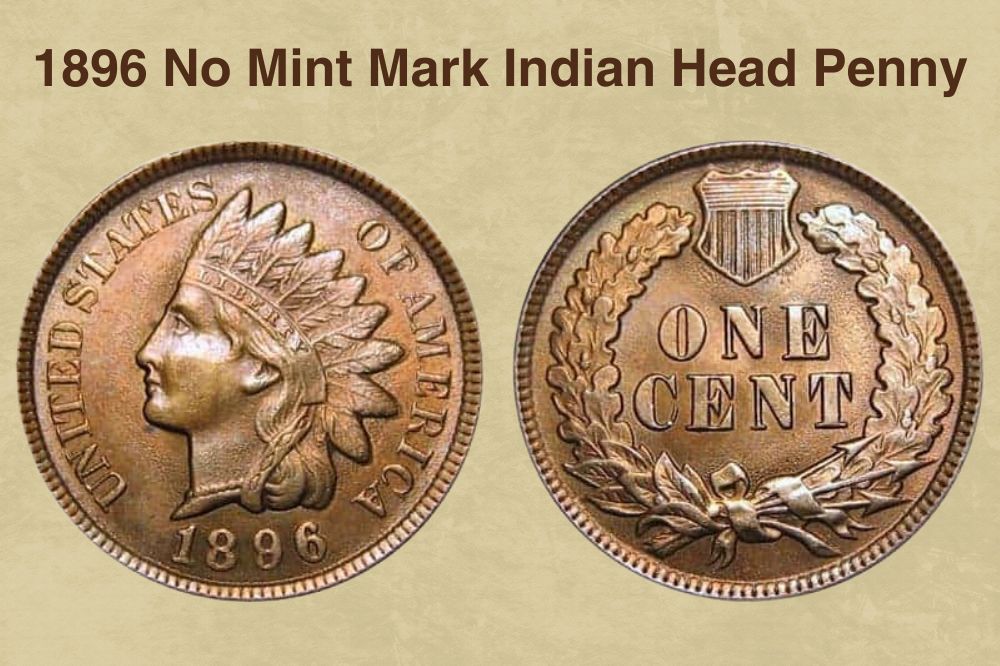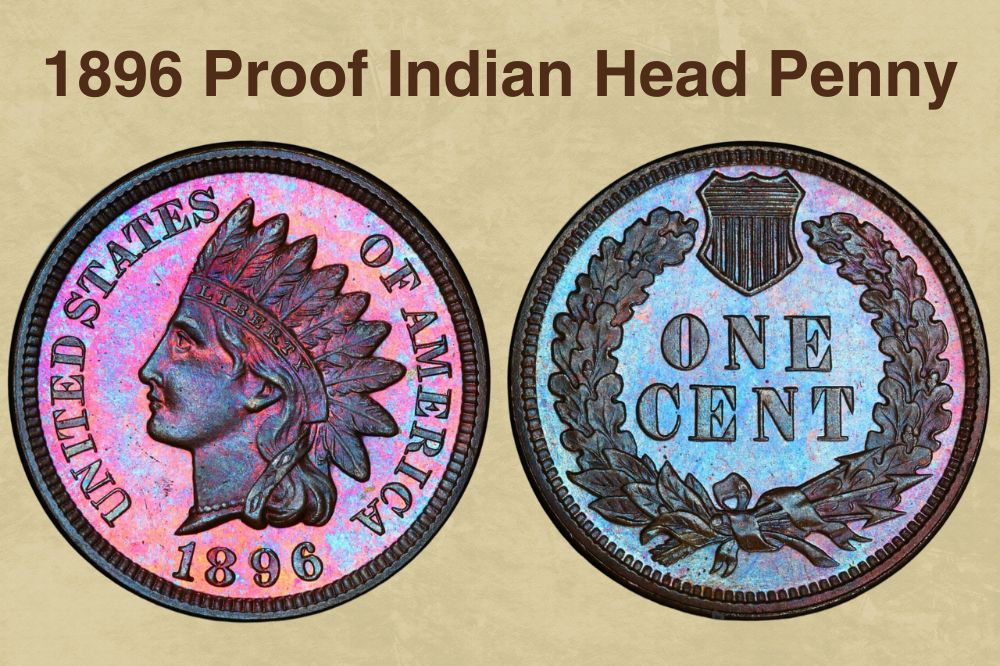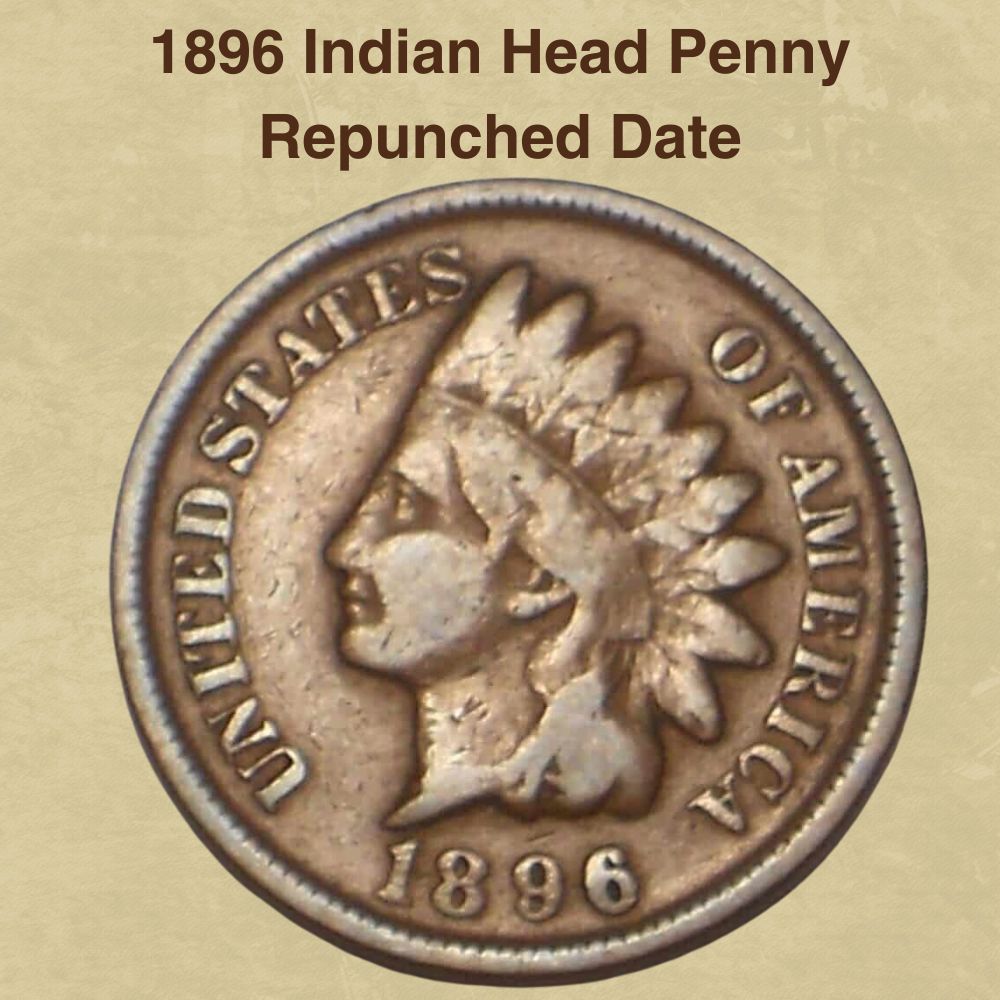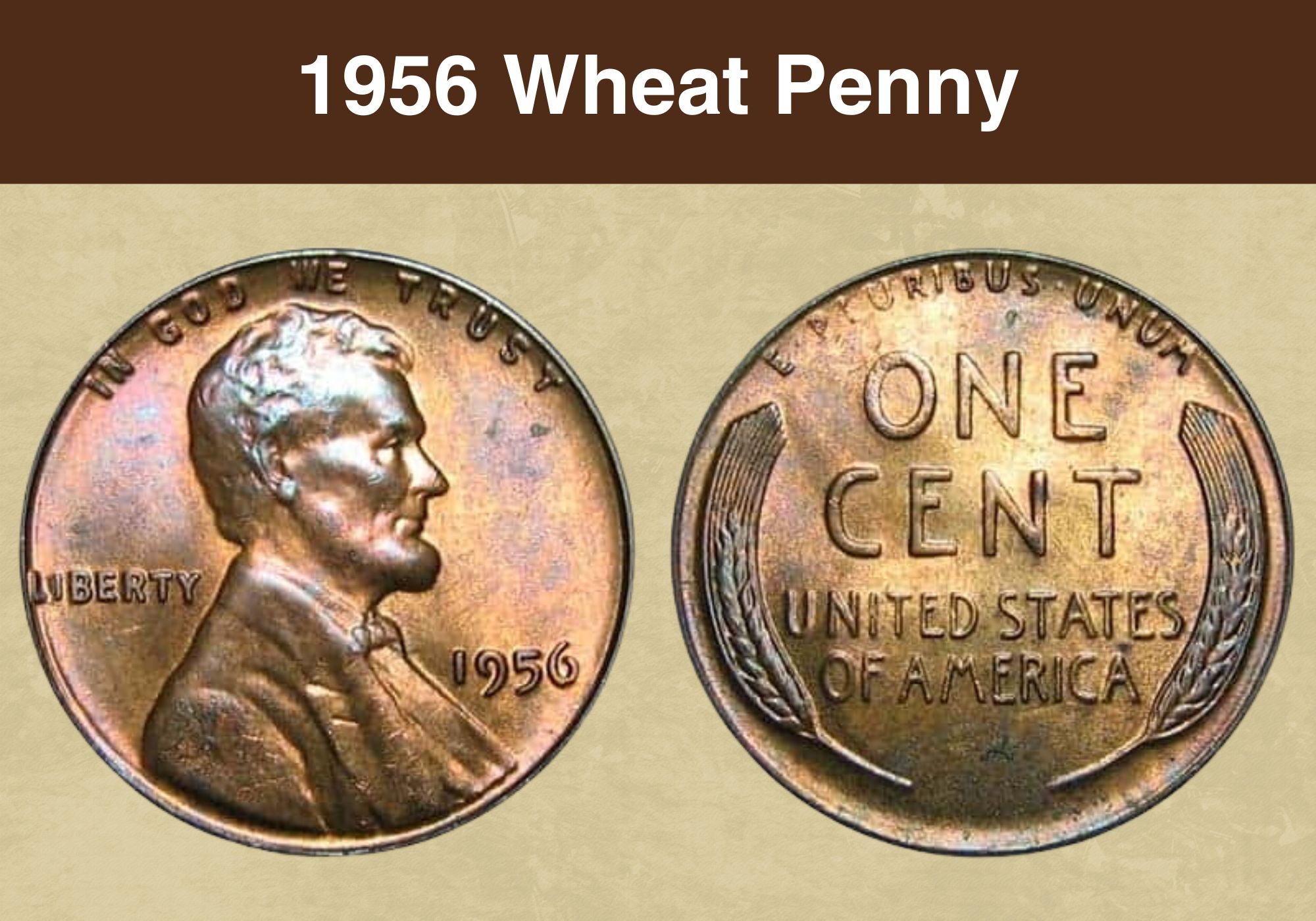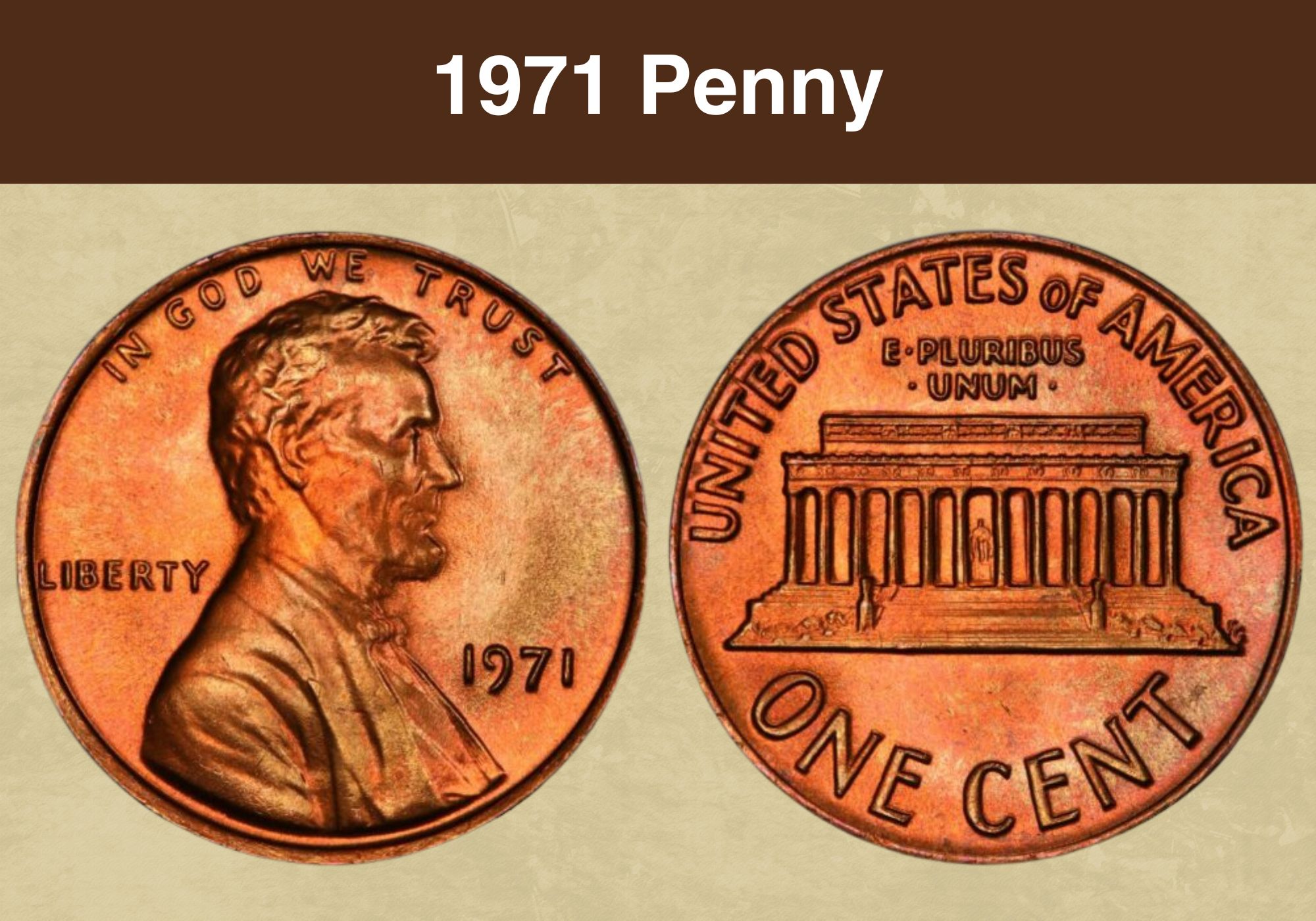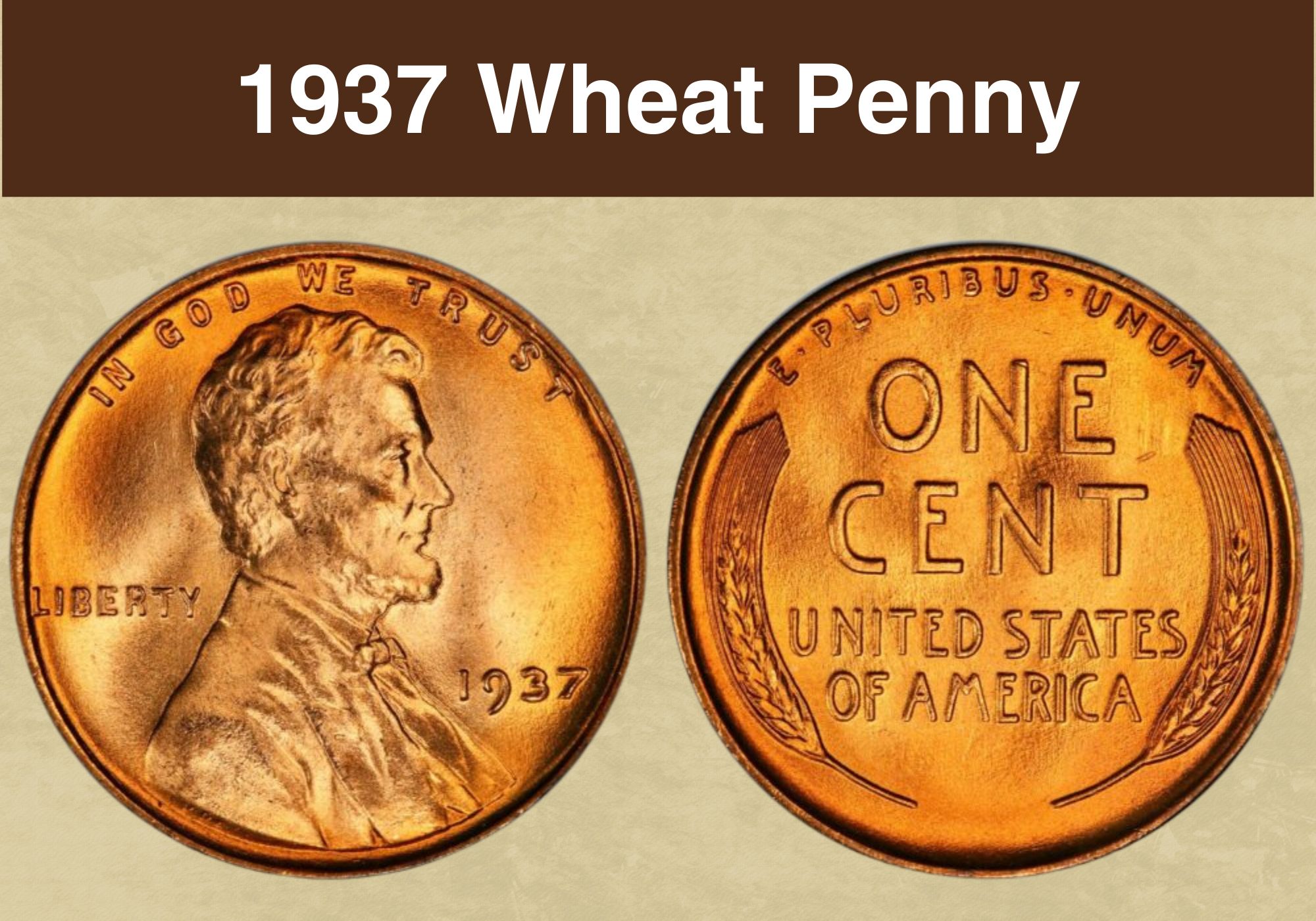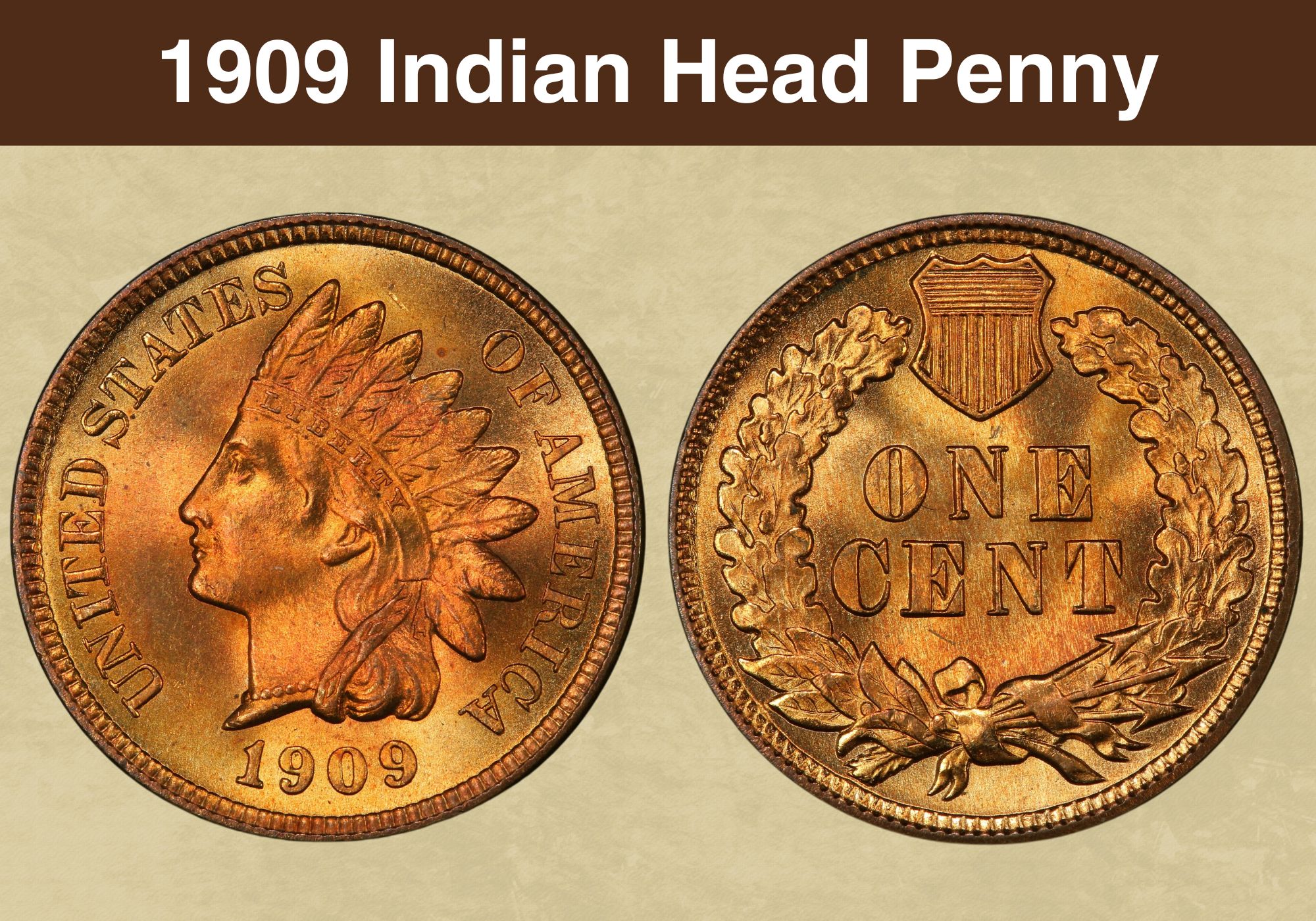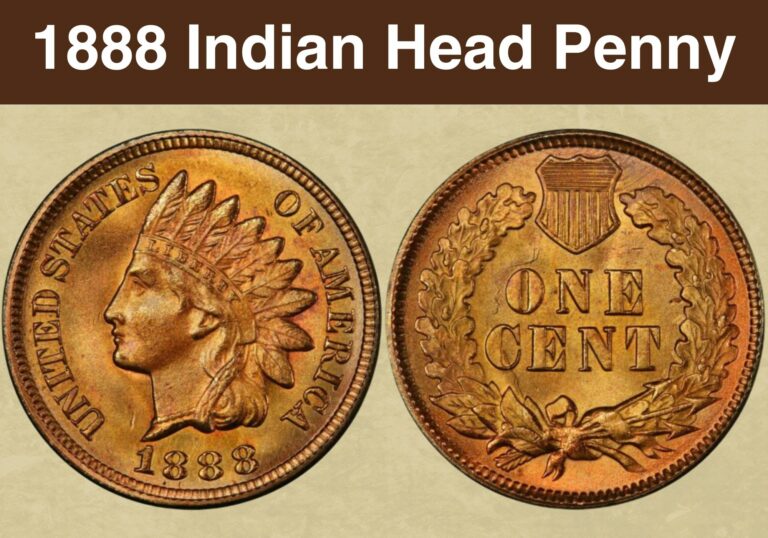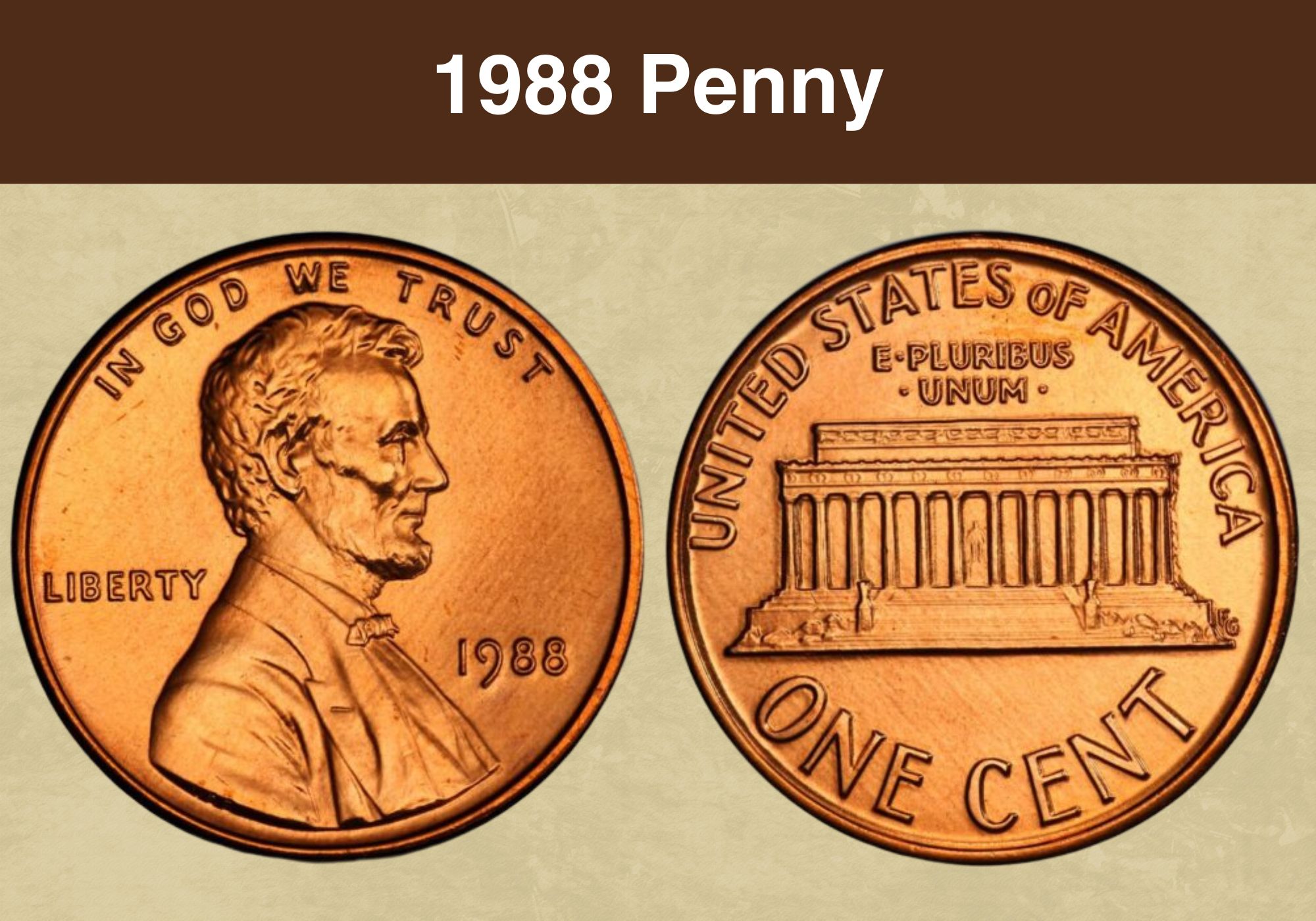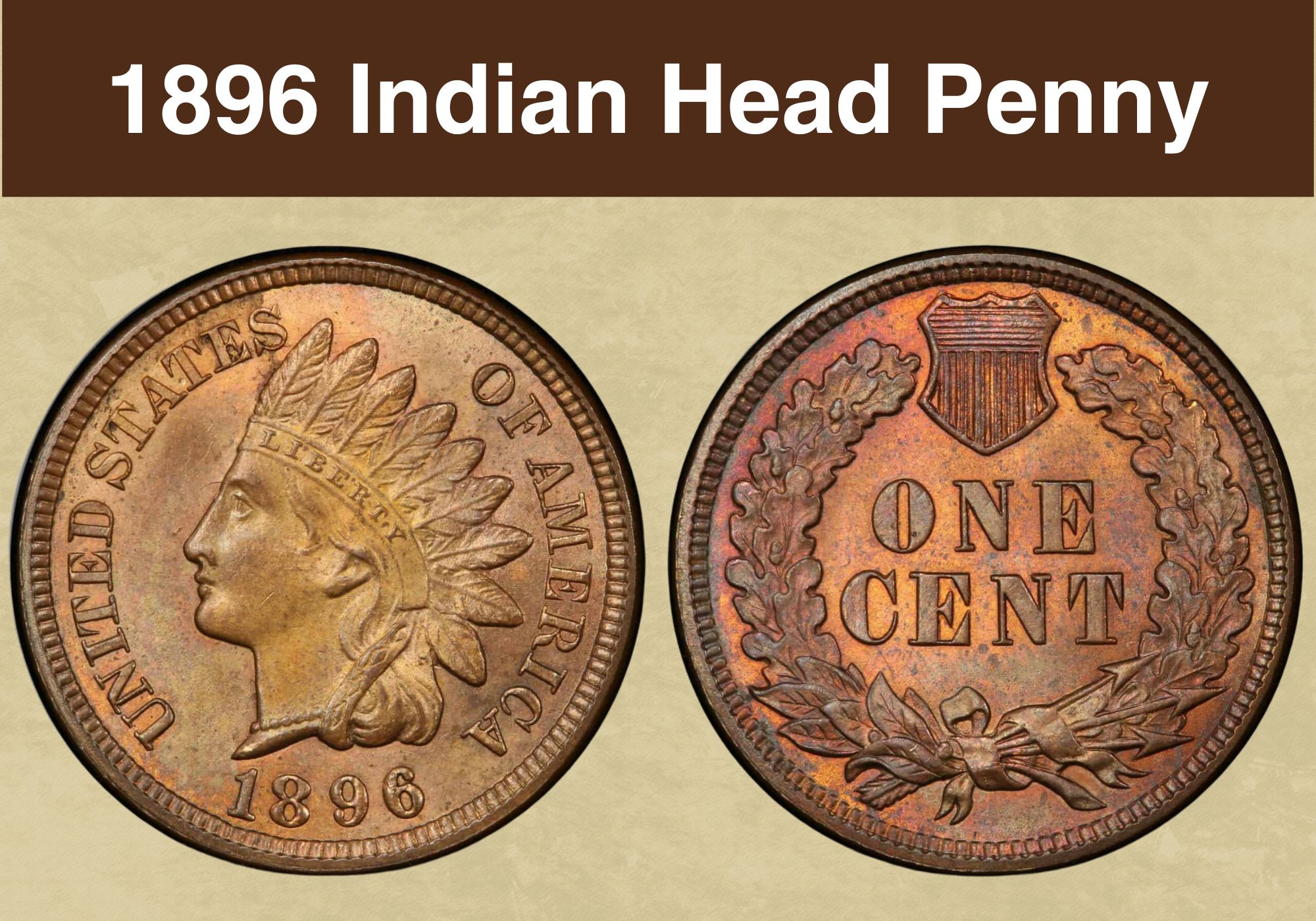
Coin Value Contents Table
- 1896 Indian Head Penny Value Chart
- 1896 Indian Head Penny Grading
- 1896 No Mint Mark Indian Head Penny Value
- 1896 Proof Indian Head Penny Value
- Rare 1896 Indian Head Penny Error Lists
- 1896 Indian Head Penny Cud Error
- 1896 Indian Head Penny Misplaced Date
- 1896 Indian Head Penny Repunched Date
- Where to Sell Your 1896 Indian Head Penny ?
- 1896 Indian Head Penny FAQs
The 1896 Indian Head penny is one penny rookie and veteran coin collectors long to have in their coin collection. This coin stands out for many reasons, the most important being that it is a rare find. If you have one, this guide will show you how much it is worth in the coin market.
We’ve provided details of the 1986 Indian head penny value. In this article, you’ll get a load down of its history, current value, and ways to grade this coin to avoid getting cheated.
1896 Indian Head Penny Value Chart |
||||
| Mint Mark | Good | Fine | Extremely Fine | Uncirculated
(Mint State) |
| 1989 No Mint Indian Head Penny | $2 | $4 | $15 | $40 – $420 |
| 1896 Proof Indian Head Penny | – | – | – | $175 – $900 |
1896 Indian Head Penny Grading
Assigning an accurate grade to an 1896 Indian head penny will require you to get familiar with the numeric coin grading scale. The grading scale runs from 1 to 70, with coins in pristine conditions graded higher than those with noticeable worn-out features.
| # | Grade |
|---|---|
| 1 | Basal State-1 |
| 2 | Fair |
| 3 | Very Fair |
| 4, 5, 6 | Good |
| 7, 8, 10 | Very Good |
| 12, 15 | Fine |
| 20, 30 | Very Fine |
| 40 | Extremely Fine |
| 50 | About Uncirculated |
| 60 | Mint State |
| 65 | Mint State |
| 70 | Mint State |
Please check our grading guides to know your coin scale, It’s the necessary step to know the exact value of your coin.
Check out now: How to Grade Indian Head Penny?
1896 No Mint Mark Indian Head Penny Value
The 1896 no mint mark Indian head penny is part of the popular Indian Head Cent series that ran from 1859 to 1909. The Philadelphia Mint was in charge of producing this coin and succeeded in making a total of 39,055,431 pieces.
Although it’s not a relatively rare find compared to some coins produced earlier in the same series, finding one in pristine condition can be challenging.
History
The history of the 1896 Indian head penny began in the mid-1850s when the United States of America experienced a surge in the price of metals, including copper, a key material for producing coins.
To combat this problem, the United States Mint decided to make the sizes of the coins smaller and introduced a new design. The result is the Flying Eagle Penny, an official currency from 1856 to 1858.
Although this new coin had less copper content and successfully reduced production costs, there were issues in its design that led to a significant amount of errors during the striking process. This resulted in an alarming amount of poorly-struck coins in circulation and raised the question of how to produce high-quality coins.
An answer to the question came at the end of 1858 when US Mint director James R. Snowden wrote a letter to the Secretary of the Treasury directing them to create a new coin design with features easily struck to reduce the occurrence of errors.
Snowden met with James B. Longacre, Chief Engraver of the US Mint at the time. Together, they concluded on a brilliant new design inspired by a picture of Longacre’s daughter wearing a Native American headdress.
This new design sparked some controversies; however, there was no denying that its beauty and uniqueness clearly showed James Longacre’s artistic talent.
In 1859, the Philadelphia Mint kicked off production of the Indian Head Cent and would go on to produce the unique coin for five decades. Like most other coins in this series, the 1898 Indian Head Penny was well-struck compared to other coins made in the same year. This means that it had only a few occurrences of error, and an impressive amount of the coin still exists today.
The Obverse
Lady Liberty’s exquisitely designed bust is the most prominent feature on the obverse of the 1896 Indian head penny. Her head faces left as if staring at something ahead, and over it is a Native American headdress designed with intricately detailed feathers.
The headdress symbolizes honor and respect and gives credence to the Nation’s prestige. Lady Liberty also has a band tied around her head with a ribbon flowing down her neck, accentuating the waves of her hair. A closer look at this band will reveal the word “LIBERTY” written on it.
Likewise, on the coin’s left rim, one can see a curved inscription of the words “UNITED STATES” next to Lady Liberty’s face, and on the right, the words “OF AMERICA” appear boldly written. The date ‘1898’ is below her profile, close to the coin’s bottom rim.
The Reverse
On this coin’s reverse, a laurel wreath, representing victory, circles the boldly written “ONE CENT. Both ends of the wreath meet on each side of the Union Shield at the top of the coin. Above the bottom rim, a ribbon ties the wreath and three arrows together, signifying union and defense.
Edges
The edges of the 1898 Indian head penny are plain, meaning they’re void of any design or markings. Its plain feature gives it a smooth surface, adding a much-needed simplicity that balances out the elaborate elements of other parts of the coin’s design.
Details
The 1896 Indian head penny is a fairly light coin weighing only 3.11 grams. It’s made of 95% copper and 5% zinc, and tin. Likewise, the coin measures 19mm in diameter and has a current melt value of $0.0270.
Varieties
One exciting thing about the 1896 no mint mark Indian head penny is its variety in terms of color, and this detail comes into play when determining its value. You can find the coin in three colors: brown, red, and red-brown.
- Brown 1896 Indian head penny
Although the brown (BN) Indian head penny typically looks shiny and attractive in mint condition, it’s more likely to get damaged by oxidation, making tiny green spots appear on its surface. Also, It’s prone to wear, and this tells on its value. If you have one, you may not make much from selling it.
However, there are some brown Indian head pennies worth a considerable price due to their high grade. For instance, a PCGS-graded 1896 MS66-BN Indian head penny has a current value of $460, and in 2007, a similar MS66-BN coin sold for $575 at an auction organized by Bowers and Merena.
- Red-brown 1896 Indian head penny
Many coin collectors will rather add the red-brown (RB) Indian head penny to their collection than the brown one, making it a bit more valuable. Although its surface is prone to oxidation, the damage is usually minimal.
If you have one of these, you may want to look closely at its surface under a microscope because the amount of red and brown spots varies from coin to coin. Those with more red spots are more valuable than those with more brown spots.
In pristine condition, the red-brown Indian head penny is worth hundreds of dollars. For instance, the current price of a PCGS-graded 1896 M66-RB coin is $1,650, and its most expensive piece sold for $2,467.50 at the Legend Rare Coin Auction in July 2021.
- Red 1896 Indian head penny
The shinier and blemish-free features of the Red (RD) 1896 Indian head penny makes it stand out as the most valuable coin variety. In addition, unlike the other two, this coin is hardly affected by oxidation, so collectors would pay more to acquire one.
A typical red 1896 Indian head penny in mint condition is worth much in the current coin market. For instance, a PCGS-graded MS66-RD coin is worth $3,500, while one graded MS67 is worth $15,500. In July 2009, the most expensive red 1896 Indian head penny sold for $25,300 at the Heritage Auctions.
Also read: 13 Most Valuable Wheat Penny Worth Money
1896 Proof Indian Head Penny Value
The Philadelphia Mint also produced limited proof Indian head pennies in 1896. These coins were specially made for collectors, with only 1,862 pieces produced. Proof coins typically have better quality and superior design features that distinguish them from regular ones, and their grading begins from 60 to 70 on the grading scale.
Their high grade is due to the lack of usage of these coins for commercial transactions; hence they have minimal blemishes. Moreover, 1896 is the second year in the Indian head cent series with a mintage of less than 2,000 proof coins, making it even more valuable. Likewise, proofs struck between 1896 and 1909 are of higher quality than those of other years.
The 1896-proof Indian head penny also has varieties in terms of color: brown (BN), red-brown (RB), red (RD), and cameo (CAM). Like the regular struck ones, brown proof coins are the least valuable, while cameo proofs have the highest value. According to the current coin market, a PCGS-graded 1896 PR67-CAM Indian head cent costs $12,000
Also read: 12 Most Valuable Lincoln Penny Worth Money
Rare 1896 Indian Head Penny Error Lists
The 1896 Indian Head penny had a few flawed coins that slipped into circulation. These coins are marked with unusual features that affect their value by drastically reducing their market price or significantly increasing it. We’ve discussed a few rare errors that add more value to the 1896 Indian head cent below.
1896 Indian Head Penny Cud Error
You can tell a cud error by looking for little cracks or raised portions in the coin’s design. This error occurs when excessive force is used to strike the planchet, resulting in a crack in the coin’s die. Sometimes, the die breaks and falls off, forming a visible dent on the coin’s surface. This is called a full cud, mostly found on the “ONE CENT” inscription on the coin’s reverse.
Likewise, some cuds are too tiny to spot with your naked eyes. These types are called retained cud. You’ll need a microscope or magnifying glass to spot them. On the other hand, full cuds are generally more valuable than their retained counterparts. Getting a hold of one is a worthy investment.
Finally, Cuds can also appear on a coin’s rim, and although they may be rare, they’re quite visible. Therefore, coins with rim cud are of considerably more value.
1896 Indian Head Penny Misplaced Date
Many collectors have taken to collecting coins with misplaced date errors, and the 1896 Indian head penny is no exception. Coins with this error have one or more date numbers wrongly placed. For instance, the number “6” may appear closer to the rim than the others, or the number “1” may misalign with others by appearing closer to the base of Lady Liberty’s neck.
The degree of misplacement plays a role when assigning value to coins with this error. Coins with at least a number placed farther from their original position tend to have more value than those with at least a number appearing closer to their original position.
1896 Indian Head Penny Repunched Date
A repunched date error occurs when the die used on the date is struck multiple times. This is a common error in the Indian cents series because, at the time, the US Mint manually used hammers and punches for planchet striking. Thankfully, in 1909 the Mint discontinued the error-prone process and employed a more reliable method involving a master hub.
You can tell a coin has this error if you spot a faint replica of some numbers in its date. The visibility of this error plays a vital role in determining the coin’s value. A less visible repunched date won’t increase its value as much as a more visible one.
Generally, the value of an 1896 Indian head penny with the repunched date error ranges from hundreds to a few thousand dollars. However, remember that the coin’s value will depend on factors such as rarity, market condition, and demand.
Also read: 17 Most Valuable Indian Head Penny Worth Money
Where to Sell Your 1896 Indian Head Penny ?
Now that you know the value of your coins, do you know where to sell those coins online easily? Don’t worry, I’ve compiled a list of these sites, including their introduction, pros, and cons.
Check out now: Best Places To Sell Coins Online (Pros & Cons)
1896 Indian Head Penny FAQs
Is 1896 a Rare Indian Head Penny Year?
Although 1896 was one of the best striking years of the Indian head cent series, it’s not particularly rare compared to 1877, 1899, and 1869. However, if you possess one with a high grade, you may be holding on to something valuable.
How Can You Tell If an Indian Head Penny Is Real?
You can start by carrying out a visual inspection. If you notice poor details throughout the coin’s design, it’s most likely a counterfeit. Another obvious sign is the shape of the digits indicating the year. Usually, the numbers are distorted, uneven, and difficult to make out on a fake coin. Additionally, you may need to go further by inspecting the color to tell if some coins are genuine.
Other important signs like planchet quality and die markers require some expertise to detect. So we advise you to seek professional help.
Can I clean an Indian Head Penny?
Never try to clean an uncirculated or proof Indian head penny because you may leave marks that can reduce its value. Likewise, although coins in circulated condition usually appear dirty, cleaning them is a risk you shouldn’t take because there’s a high chance of causing more damage to their surface.
However, if you find a buried coin, you can use only distilled water to rinse off the dirt on its surface. Keep in mind, however, that there’s a risk of damage with this method. The best thing to do is to take your coin to a professional to have it cleaned rather than attempting to do so yourself.
Also read: 11 Most Valuable Wheat Penny Errors

